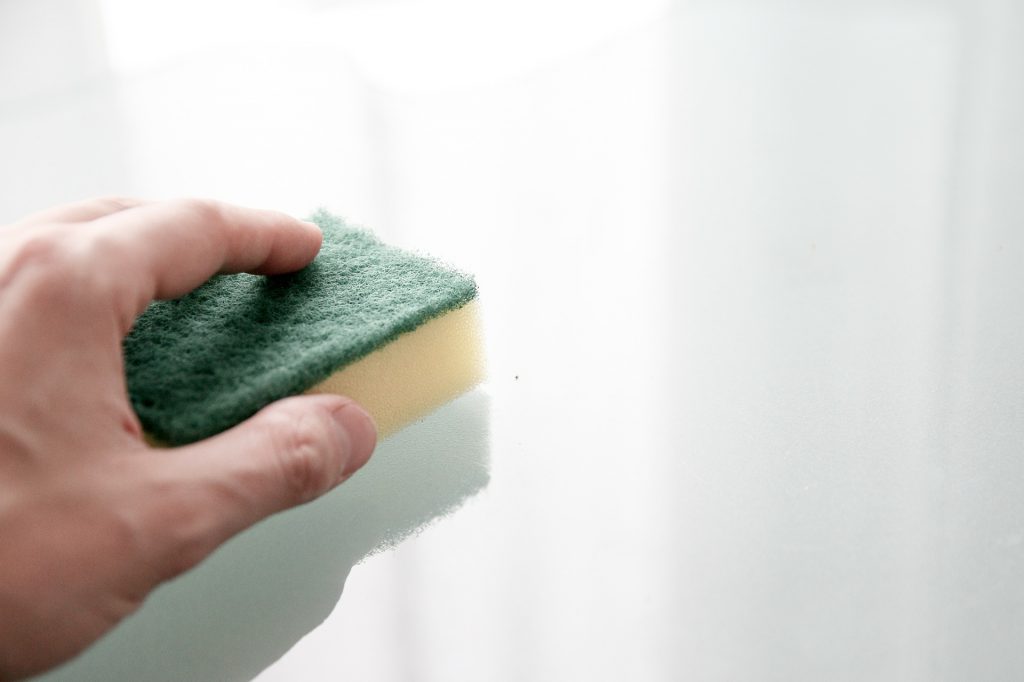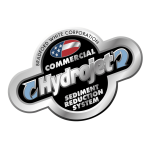How do hard water spots form on glass? For showers, the stains form as a result of soap scum. For exterior glass, when rain water or snow dries it leaves mineral deposits. One way to avoid hard water spots, particularly in your shower glass is to wipe down areas immediately. But this is not always possible.
And how can you tell hard water stains from normal stains? With hard water stains, you can remove them using regular detergent. Hard water stains are harder to remove.
Fortunately, there are ways you can use to remove the hard water spots, and some entail using homemade formulations, such as vinegar and water. Here are top ways to remove hard water stains from glass:
Dedicated limescale removers
If you have a problem with hard water stains on surfaces such as the taps or bathroom, you can consider an all-purpose limescale remover. Most remove hard water stains from glass by chemically dissolving the hard water spots.
These products are usually very concentrated and powerful, and suitable for stains that have been left on the glass for many years. The advantage is that they work quickly too, and you’ll only need to apply the solution with a sponge and scrub it in with a toothbrush, then rinse with water.
Window cleaners
Most window cleaners are formulated to remove grease and dirt from the glass. They don’t leave any streaks behind,and may also remove insect marks and fingerprints. Window cleaners are also easy to use. You’ll just spray them on the glass, and use a cloth for drying.
Preferably, it’s better to have a squeegee, as it dries the glass more effectively, and doesn’t soak up water. Also, consider getting a window washer applicator. When shopping, instead of buying the items separately, you can find a 2 in 1 window squeegee set. Some of the trusted brands when it comes to window cleaners, include Windex, Weiman, Stoner, HG, and Seventh Generation.
Trick: Scrub glass with super fine steel wool
Here is a glass fact you should know: steel wool (#0000) doesn’t scratch your glass. So, where can you find it? Well, Amazon carries various super fine steel wood brands, and you can also find it in a hardware store. And how do you use it? You can start by applying soapy water on the glass. Scrub using the steel wool, and this will help remove the mineral deposits. You’re not done yet. Use a squeegee to remove the residue. Wipe the glass as if you’re polishing to check for left-over spots and streaks.
Alternatively, you may begin by soaking the stain glass with vinegar. If it’s possible, hang a towel or soak bedsheet over the glass. Keep the surface wet and soak for up to 30 minutes. You can then use a store-bought glass cleaner, such as the Bar Keeper’s Friend multi-surface cleaner, and scrub it in with the super fine steel wool. After scrubbing the water spots, rinse off the glass, and check for any residual spots that need additional attention.
WD-40
WD-40 is at its core, a penetrating cleaner that can loosen rust, remove oil, dirt, grease, and grime. It also provides some lubrication, and protects metal from rusting. It’s typically used for machine, automobile and equipment maintenance. But it also boasts of over 2,000 uses and a history spanning 60 years.
One of its numerous uses is removing hard water stains from a variety of surfaces. Many users have used it to clean stained toilet bowls. It works by softening the lime deposits, which makes them much easier to wipe away. You can choose from a range of WD-40 products including the iconic WD-40 original Spray Can to the low-odor version for interior use.
Polishing the glass with a mildly abrasive polish
You can remove water spots like a professional by using a glass polishing compound. The compound will have slightly large particle sizes of up to 2.5 micron. It also contains oxides in its formulation. Most abrasive polishers will wear down the lime deposits, without leaving scratches.
While some can be applied by hand, it’s much more effective to use a power hand tool with a polishing pad such as an electric drill, rotary polisher, or DA polisher. You may also end up with a smoother glass, and remove hairline scratches.
Many of the glass polishing compounds are used professionally in various industries, including eyewear, watch glass, marble, ceramic, and windscreen polishing.
Where can you find the glass polishing compound? Well, check on e-commerce sites like Amazon or specialty car detailing stores.
Vinegar or lime with water
You can get started with ingredients in your kitchen. Here is how to remove hard water stains from glass with vinegar: You’ll need to prepare a solution or paste by mixing vinegar with water. Use equal parts for a stronger solution, but you can also dilute it further to 1 parts vinegar to 10 parts water.
You then spray the solution on the glass, and scrub it in using a cloth or brush. After drying the glass with a towel, the vinegar should have dissolved some of the limescale since it’s a weak acetic acid and reacts with the calcium in the mineral deposits. When using vinegar and water, there is a chance for streaking if parts of the glass dry out quickly.
You can substitute vinegar with a lime solution. The citric acid in green limes will also dissolve the limescale deposits. You may also prepare a baking soda paste by mixing baking soda with water. It will not react with the limescale deposits but it’s mildly abrasive.
Toilet bowl cleaner
This method has been hailed as one of the best to quickly remove limescale deposits from your windows and glass. You just use a regular toilet bowl cleaner. The substance is strong so you’ll need proper ventilation to prevent coughing and choking that can result from inhaling the strong chemicals in the solution. For application, you’ll need a sponge or towel that you’ll first dip in warm water and get a little of the cleaner on it. You then wipe the glass and rinse it with enough water until the smell is gone.
The best solution: A water softener
Prevention is better than cure, so find ways to address the underlying cause of hard water stains. For example, consider having a water softener installed. Water softeners work by neutralizing minerals that would build up on surfaces around your home if left untreated.
Such an appliance treats water before it flows through your pipes, making it a great all-around solution for eliminating limescale buildup around your home.





